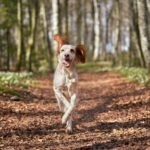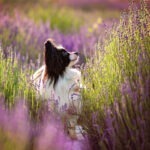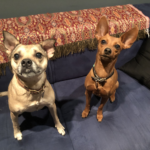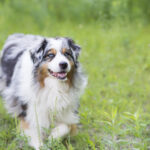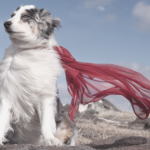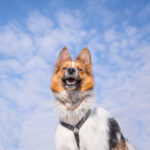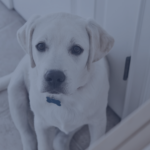Enrichment provides valuable problem-solving and mental stimulation for dogs. One of the easiest ways to provide it is work-to-eat toys. But what about dogs with dietary restrictions? Even dogs who are on a very restricted diet will have some options to consider.
We all want to enrich our dogs’ lives, and the lives of our clients’ dogs, as much as we can. Enrichment matters to our dogs’ behavioral health and welfare, and can be a wonderful tool in a dog trainers toolkit.
But sometimes, with some dogs, providing appropriate enrichment can get tricky. Enrichment suggestions for dogs often includes food toys and puzzles, so for dogs who are on a restricted diet, special considerations must be made.
The Academy’s excellent graduates are a fount of creativity when it comes to making dogs’ lives more fulfilling and rich, so we asked them to weigh in: how do you help your clients find great enrichment options for dogs on a restricted diet?
If your dog is limited in what foods he can tolerate, have no fear! There are still plenty of ways to meet his enrichment needs.
Kate LaSala, CTC, CBCC-KA, PCBC-A, CSAT
Rescued by Training
Even dogs on limited diets can have their food in enrichment feeding toys, so wet food in Kongs and dry food in kibble toys. But, if your dog can’t have wet food, with some creativity, you might be able to turn their kibble into water softened mush to spread it on something like a LickiMat or to use as a “glue” to mix with other dry kibble to be able to stuff a Kong.
For non-food ideas, scent work is wonderful enrichment. Sniffari walks, where you let you dog lead the way with their nose and explore is a great enrichment activity. Swapping toys in a mesh bag and exchanging with a friend, especially if they have cats or other animals, and have them keep that bag at their home for a few days and then give it back to you, now fully saturated with new smells ready for your dog to sniff and explore is always fun!
Joan Hunter Mayer, MBA, CTC, CBCC-KA, CPDT-KA, CSAT, CNWI
The Inquisitive Canine
Even though a dog might be on a restricted diet, he or she can still ingest meals through interactive food toys and/or training. (Double-check with the dog’s vet about meal size, caloric intake, and timing, should these be a concern.) For wet food, Kong toys and others of this type can be used for meals. This type of food can also be placed in camping tubes and used to for reinforcing behaviors during training sessions.
For dry foods, interactive food toys can create fun and games, build problem-solving skills, and keep a dogs mind active while decreasing boredom-related problems. Scavenger hunts can be arranged in and around the dog’s living area, or outside in the yard. Pieces of dry food can also be used for training, whether guardians are teaching new behaviors or refining existing skills. Training classes such as K9 Nose Work are also ways to enrich a dog’s mind while teaching them new hunting skills.
A dog’s diet may be limited, but ways in which foods can be delivered can be infinite. It’s all about determining what the dog enjoys doing and building on that.
Jennifer Malawey, CTC
Jennifer Malawey Training & Behavior
Even dogs who are on a very restricted diet will have some options to consider. If you’re not sure what’s safe, ask your vet or nutritionist for a list of safe foods to supplement your dog’s regular diet. Then, ask your dog which ones they like!
If what you typically think of as “dog treats” don’t make the list, many fruits and veggies might. Keep in mind that foods can be prepared in many ways—freeze-fried, air-dried, cooked, raw—and your dog may like some but not others. Don’t give up the search! If they happen to like them all, you’ve got that much more variety to enrich your pup. Variety itself counts as enrichment! What’s more, if you find a good treat, a qualified trainer can help you shape your dog to enjoy working for his otherwise under-appreciated regular food.
One last thought: enrichment encompasses wayyyyy more than just how our dogs consume food. Think of how you can let them explore with their other senses. Just letting them follow their nose on walks is the easiest olfactory enrichment. Playing music and podcasts (yes, podcasts) for them is auditory enrichment. Toys come in a variety of shapes and textures for tactile enrichment. Playing with YOU is social enrichment! All of these are parts of the whole enrichment package.
Allison Lamminen CTC, CSAT, PCBC-A
Delighted Dogs
While there are many ways to provide enrichment for our dogs, using food tends to be the most obvious. For dogs who have food restrictions, this can seem like an overwhelming task. The good news is that it can be just as easy to provide enrichment to a dog with food restrictions.
Whether your dog eats soft food or kibble, you can use their food for training reinforcers. Each piece of kibble can take the place of a treat and soft food can be packed into a squeeze tube for easy, clean delivery. If you’re stuffing Kongs or using puzzle toys, simply use their meals in place of treats. For dogs who have food allergies, it can be fairly cheap and easy to cook up a protein that they are able to eat. For example, if a dog can only eat chicken-based foods, chop and boil chicken breast for high value training treats.
In addition to food-based enrichment activities, there are countless other ways to provide enrichment to your dog. For example, bring your dog to the dog park (if they enjoy playing with other dogs) for some running and romping, go on a hike at the local nature center or visit a different state park once per week, set up a lure course in your backyard, dive into the nose work world, or play fetch and tug.
Enrichment doesn’t have to be a daunting task. In fact, it can be so much fun to provide your dog with a variety of enriching activities to participate in. All that matters is that your dog is having fun, using their brain and appears to be fulfilled at the end of the day.
Kristi Benson, CTC, PCBC-A
Kristi Benson Dog Training
Dogs on a restricted diet sometimes have some flexibility. If the special diet comes in a tinned format, many dogs find tinned food more delicious, so it can be used for fun training (use a food/squeezy tube) or to stuff Kongs or other food toys.
You can also try soaking her kibble and adding a drop or two of fish sauce, if your vet agrees: fish sauce is very odiferous! Which dogs often love. You can also ask your vet about experimenting with other brands of prescription dog food, or if you have the resources, reach out to a boarded vet nutritionist. They work remotely and might be able to come up with a great solution.
Food might be the easiest way to enrich a dog, but it absolutely isn’t the only way. Activities and scents are also very enriching for dogs. Some good options include:
- Tug games, playing “prey” type games with new or favourite dog toys, or using a flirt pole
- Hide and seek
- Buying the scents that people use to train hunting dogs or other interesting smells, and playing games with these scents.
- Sniffaris. If your dog likes it, consider driving to a new part of the city for each walk. Get a long-line leash if your dog can’t be off leash and allow them to lead you around.
- Buy or trade for new dog toys, and then cycle quickly between toys. You can put toys away for a few weeks so they seem newish.
- Dog friends. If your dog likes dog play or just likes hanging around with other dogs in sociable companionship, play dates or a trip to the dog park are very enriching
You can also just bring scents home for your dog. When you are out and about without your dog, pat friendly dogs with your mittens on and then bring them home. If she likes sniffing the mittens when you do this, the few seconds she spends investigating is absolutely enriching. I always stop when I get home in my car and let my dogs get their fill of my wheels and mitts. Packages from far-away places are also a real delight, and a dog can sniffle the cardboard and then rip it up, if they wish.
Patrice Kuiken, CTC
In Good Paws Dog Training
If your dog is on a restricted diet, use their regular food in food puzzles as enrichment! A couple options include: stuffed Kongs/Toppls and boxes o’ tennis balls.
- Stuffed Kongs/Toppls: Great for chewing and can take a while. Start stuffing the Kong/Toppl with their dry dog food first. Make it easy! After they get the hang of it, try soaking their dry dog food in water for several hours and then stuffing a Kong or Toppl with it. The harder you pack it in, the harder it is to get out. As an added challenge, you can start freezing it before serving.
- Boxes o’ tennis balls: This is a food puzzle you can make with things you can find around the house. Get a cardboard box or two (can nest one inside the other) that your dog can get their head into. Put their food at the bottom, then put tennis balls and/or crumpled newspapers in the box. You can sprinkle more kibbles in if you want. Your dog then will have to nose around or pull out the tennis balls/newspaper to get to the food.
Keep it easy at first (food at the bottom and a couple tennis balls in the way. Build up challenge by filling the box with more tennis balls and newspaper as they progress. Supervise your dog and avoid newspaper if they tend to eat it.
Carol Saunders, CTC, CTDI, PCT-A
Positive Pooches
We do a lot of scent games with dogs in our Extraordinary Enrichment daycare program. It’s great for dogs who cannot have certain treats or sensitive tummies. We got some animal scents used for dog hunting from Amazon and Etsy, and add a few drops to a soft toy or a bumper, then drag a scent trail around the room and hide the toy. The dog is then released into the room to follow the scent trail. Big party when they find the toy – we play fetch or just give lots of praise and petting, depending on what the dog finds enjoyable. Some dogs are taught “find it” using targeting and treats initially, but switch to non-food rewards as they get more proficient in the game.
Adding value to play is a great alternative to using food as rewards. When play as a reinforcer is strong, it can be used instead of food rewards. Playing tug and fetch can be used to reinforce other behaviors such as basic cues (sit, down, stay) and self control behaviors (wait, leave it).
One of my favorite games to play with my dogs is to find hidden toys in blankets, bedding, or even my husband’s pockets (not his favorite game when they start digging lol). The reward for finding the toy is a game of fetch or tug and lots of praise. They release the toy and we do it over again – hiding the toy in harder to find places each as they get better at it.
Off leash dog play with other friendly dogs is a great way to burn some energy both physically and mentally. We love playing with bubbles, spraying the hose, sprinklers, and splashing in kiddie pools with our daycare dogs. If daycare isn’t an option, bubble and water play is still great fun at home.
